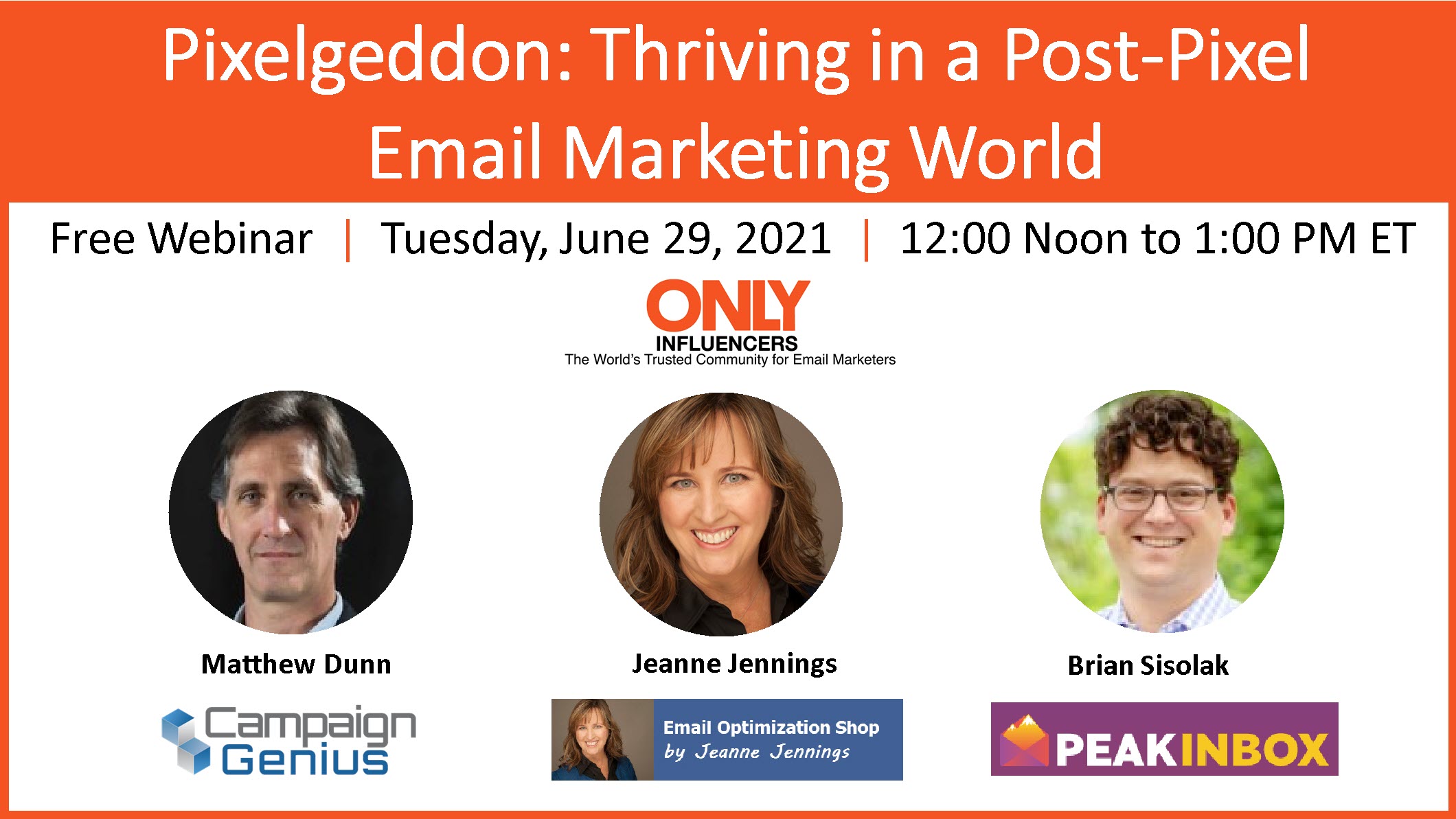Is ‘Email Privacy’ A Feint?
Apple announced Email Privacy Protection at their 2021 WWDC. Because the announced changes directly affect ‘tracking pixels’ — used nearly-universally in email marketing — the announcement kicked off considerable discussion in various email communities. Articles range from cheers to yawns to outright consternation, depending on the impact.
Working through the impacts of this on real-time content (smaller than you’d think btw), I had a different thought about the possible reason behind this move being something more than email marketing.
Let me frame it a bit before revealing the thought.
Email, as a marketing channel, is accidental. Email was originally designed as a point-to-point, person-to-person(s) tool for communication. I suspect most of the email that people send, and most of the email that they actually care about (rather than just tolerate) is still person-to-person(s). But because email was one of the earliest Internet tools, an open standard, and a relatively forgiving platform (as a whole), marketing has gone along for the ride.
I have an email address (or two, or more); so do most people. You have to, right? If you don’t, you are ‘digitally homeless.’. You use it for everything. Person-to-person(s) correspondence. Identities and sign-ups. Transactions and receipts. News and newsletters (currently in a surprising Renaissance). Subscriptions, email lists, discussion groups (less and less), lists, aliases...and somewhere down in that list...marketing emails.
I’m not knocking email as a digital marketing channel; it’s the best one, by most measures. But I am trying to give it an accurate context. In theory, the smart thing to do would be to have a “marketing emails” address, and to route all marketing emails to that isolated cyber-identity. You may have tried it; I have.
Epic FAIL.
Sooner or later, the boundaries blur and the line between interest, attention, engagement, loyalty and unsubscribe fatigue just gets ya, and there are marketing emails in your inbox again.
Well (shrug), it’s email. There’s no gatekeeper. Email is built on a set of published and more-or-less open standards. It’s the last mustang, the old-fashioned Internet tool that just won’t lie down and die. Mustangs won’t be broken (cue opening theme from Spirit).
But why the interest in ‘email privacy’ from a company with half-a-dozen tracking pixels on Apple.com? I find myself wondering if Apple (and possibly Google) is looking way out ahead and saying...all that marketing traffic that’s kind of gone along for the ride on email...opportunity?.
Potter: I'm not interested in your book. I'm talkin' about the Building and Loan.
Bailey: I know very well what you're talking about. You're talking about something you can't get your fingers on, and it's galling you. That's what you're talking about, I know.
(https://youtu.be/O4ne13Zft9Q?t=8)
Switching gears...I’ve talked with a fair number of marketers about email, texting, and texting-vs-email in the last year. There’s been some consistency in their perspective.
- Texting is a “higher-priority interrupt”. People will look at texts.
- Texting is far, far more personal. People are protective of who they hear from.
- Marketing text-messaging can be really successful, but it’s a delicate balancing act.
What they’ve said, filtered forward, sounds a lot like this:
Email Texting, as a marketing channel, is accidental. Email Texting was originally designed as a point-to-point, person-to-person(s) tool for communication (Actually, SMS was an opportunistic use of the control frequencies for cellular, which were for device coordination). I suspect most of the email texts that people send, and most of the email texts that they actually care about (rather than just tolerate) are still person-to-person(s).
Sound familiar?
Here’s the punch-line:
Imagine a “Promotions” tab showing up in your texting platform of choice tomorrow.
Not just a Promotions tab, but a tab on steroids - ‘Marketing Messages’, if you will. Separate notification controls. One-click unsubscribe. AI-organized. Privacy-sandboxed based on your preferences. Full rich-media support (video!!) and interactivity. Secure, managed and safety-checked for malware.
Want to buy those tickets? One click. Confirm that appointment?. One click, calendar aware/connected. Location ‘wired’ right in — “the branch nearest you is ___.”. Want to have a video conversation with someone at the branch first? Click here. Go on, let your imagination run.
On the far end of that invisible wire...a bunch of marketers practically wetting themselves with glee. OMG, we have amazing metrics! Guaranteed delivery!. Animated brand logos?? Too cool!. Holy cow, 99% read rates!!! Wait….we can embed the abandoned shopping cart IN THE MESSAGE??? How much does this cost —— get outta here, nothing, it’s a new standard?. Where do we sign??
Much of that is already described in Google’s specs for RMS (Rich Messaging System) — or if you’re an Apple user, visible in Messages today.
What’s missing?
Not
Very
Much
A Promotions tab. A Notifications fork. Some published standards (cough OpenGraph On Steroids cough). Evangelism. There’s even a super-shiny User Privacy Merit Badge for Tim.
It would be the Marketing Messages equivalent of the App Store / Play Store, coming soon to the device that’s never more than 3 feet from your body. Controlled and rules-based. Managed. NOT a wilderness, but a garden, complete with roses, hedges, gardeners and walls.
The Great Mobile Duopoly could divvy up the direct-digital-marketing pie, and laugh all the way to the bank, and I’m really not sure that we wouldn’t all be pounding on the door to deliver our piece of the pie. The fact that they could stick a shiv in Facebook’s ribs in the process — well, heck, that’s a bonus. Not a lot of love lost there.
The thing is, email as a marketing channel is accidental. It wasn’t built for that. It’s an open standard, the digital commons, the last mustang. (Sound the bugle now. Play it just for me). I don’t know how profitable email is for Apple or Google, but it’s not a big stretch to say there’s some opportunity in lifting/shifting that to messaging, especially if they get paid by both sides.
The average consumer doesn’t give a darn about pixels. While they say they prefer email for marketing messages, I suspect it’s more that they’re used to it, and that email is the best option to-date that they have for managing them.
I could see message platforms becoming a genuine alternative to email, and I find myself wondering if Pixelgeddon is just a feint to start moving that direction. Mess with email visibly and consumers would complain; mess with the already-invisible pixel and they’re cheering you on. Meanwhile, that messy, free-range channel (email) is just a little bit weaker as a marketing channel. If email is less measurable, and some new, high-priority-interrupt channel were more measurable and interactive...what, as a marketer, would you do?
I’d like to be all wrong & completely off-base on this one; cynicism is kind of a bore, and I like mountains, open country and mustangs. But there’s an enormous opportunity, and a lot of potential control and money at play. Broadly speaking, this is the kind of thing that tends to happen as technology change-waves play out. We’ll see how it goes, and how we can have a voice, some influence, and a role in shaping it.
Check out this related article by Matthew Dunn 'This is Tomorrow: Pixelgeddon.
Curious to hear more?
Register today for this free webinar hosted by Only Influencers.
Pixelgeddon: Thriving in a Post-Pixel Email Marketing World
Tuesday, June 29, 2021 | 12:00 Noon to 1:00 PM ET
Register Today: https://risingmedia.swoogo.com/OI210629
Cover photo byotografierende on Unsplash

 How to resolve AdBlock issue?
How to resolve AdBlock issue? 

 Matthew Dunn is a serial entrepreneur and founder of Campaign-Genius, the live-content automation platform for email.
Matthew Dunn is a serial entrepreneur and founder of Campaign-Genius, the live-content automation platform for email.